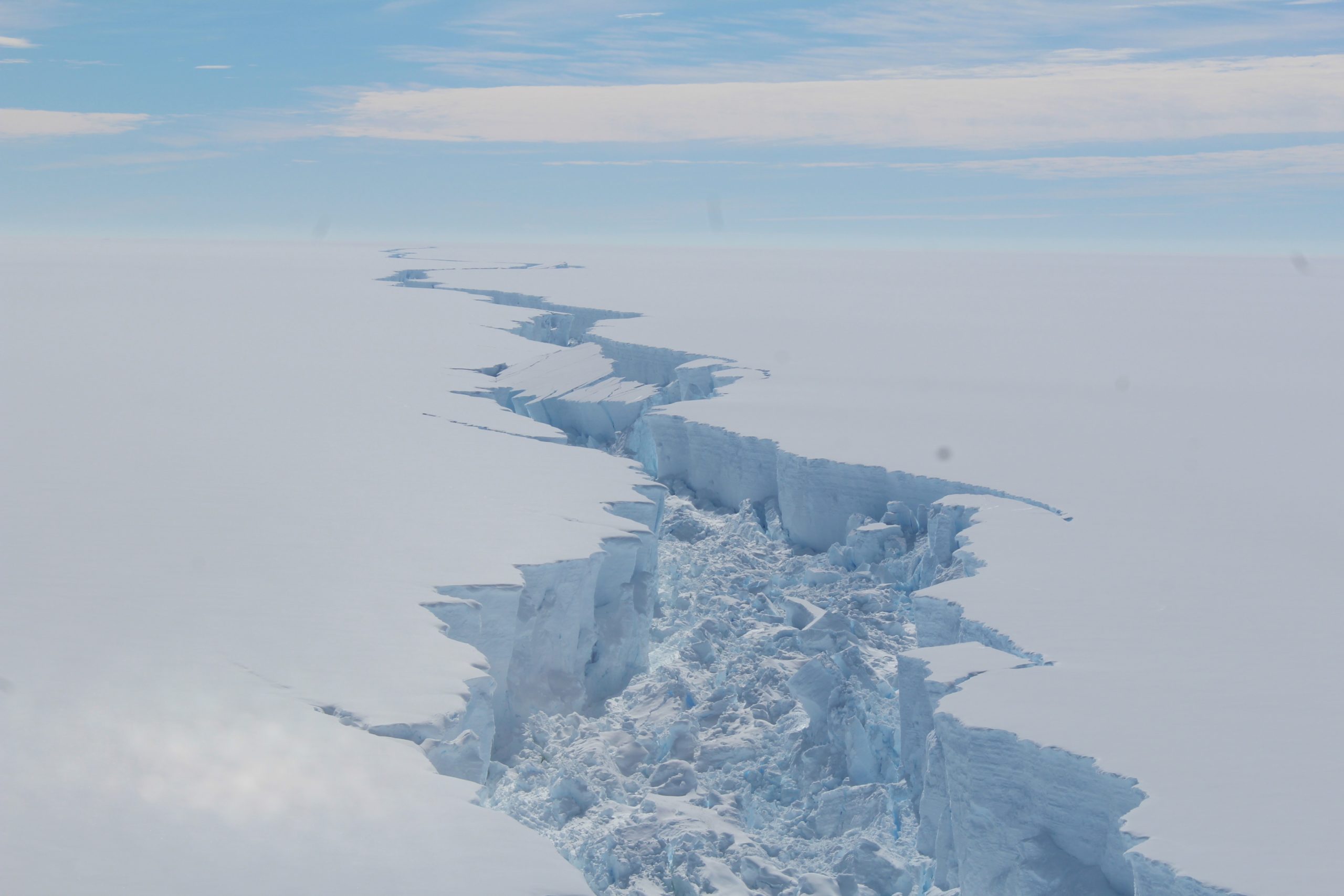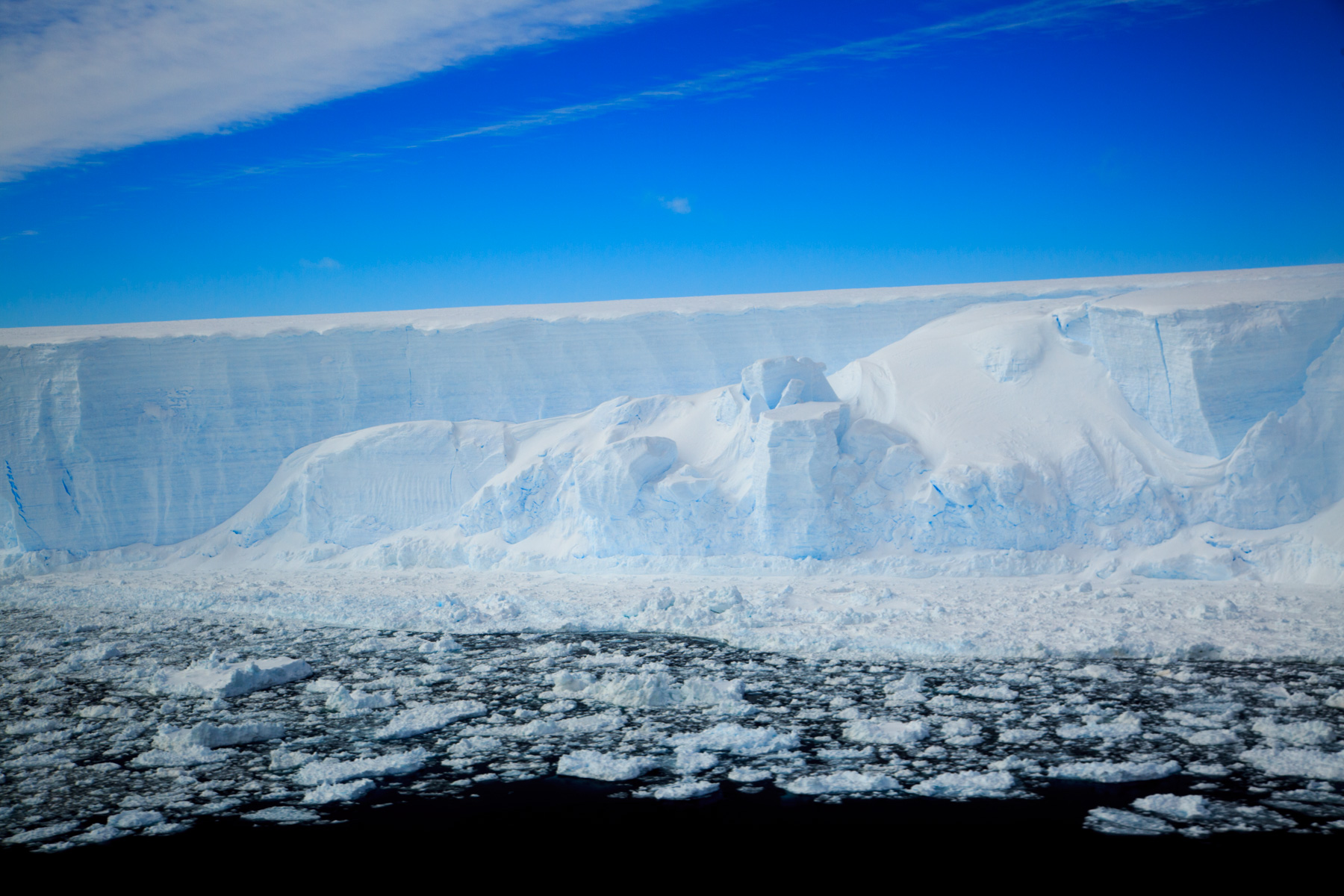Tropical storms trigger Antarctic ice melt
New factors have been identified which contribute to record-high temperatures and ice melt over the eastern Antarctic Peninsula and Larsen C Ice Shelf.
The study, published today (13 July) in the journal Nature Communications, describes how distinct patterns of air circulation over the tropical Pacific Ocean can lead to the formation of intense atmospheric rivers. These long stretches of warm, moist air result in extreme high temperature events and ice melt when they move over the Antarctic Peninsula.
A team, including British Antarctic Survey researchers, used advanced modelling techniques to determine that these anomalous air circulation patterns are caused by thunderstorms and weather patterns resulting from hot air rising in the atmosphere in the central tropical Pacific east of Fiji. Variability in activity over this region was found to explain 40% of the year-to-year variability in melt over the summer period on the Larsen C ice self. It was also likely to be the cause of the two recent record-high Antarctic temperature events in March 2015 and February 2020, both of which led to record-high surface melting on the Larsen ice shelf.

These results suggest the future stability of the Larsen C ice shelf, and the associated contribution of the Antarctic Peninsula to global sea level rise, is closely tied to future variability in central tropical Pacific weather patterns.
Dr Kyle Clem, climate scientist at the Te Herenga Waka – Victoria University of Wellington and lead author of the study says:
“In our study, we show for the first time that a pattern, which results from the convection near Fiji, leads to a large and deep area of low pressure off the coast of West Antarctica and a strong high-pressure system north of the peninsula over Drake Passage. Together, these features transport very warm and moist air from middle and sub-tropical latitudes of the eastern South Pacific to the Antarctic Peninsula in the form of intense atmospheric rivers. This is another mechanism which may help us predict what might happen with the Larsen C ice shelf.”
The Larsen Ice Shelf, on the eastern peninsula, has experienced a dramatic series of collapses since the mid-1990s, including the most northern section Larsen A in 1995, and the larger Larsen B section to its south in 2002. Farther south, the largest remaining section, the Larsen C ice shelf, is now thinning. Larsen C is Antarctica’s fourth largest remaining ice shelf. In 2017, the giant A-68a iceberg broke away from Larsen C releasing an estimated 152 billion tonnes of fresh water into the ocean when it melted.

The loss of these ice shelves in recent decades has triggered rapid thinning and acceleration of the glaciers that once fed into them and has resulted in an accelerated pace of sea-level rise contribution from the Antarctic Peninsula.
Dr John King, BAS atmospheric scientist and contributing author of the study says:
“This work confirms how strongly Antarctica is connected to other parts of the global climate system. The eventual fate of Larsen C Ice Shelf may depend on changes taking place thousands of miles away, in the tropical Pacific”
Further work is needed to determine how the occurrence of this atmospheric circulation pattern may change in the future from changes in tropical variability, continued recovery of the Antarctic ozone hole, and how the magnitude of temperature extremes may change in a warming global climate.
The research team included experts from the Te Herenga Waka – Victoria University of Wellington University of Valparaiso, the Centre for Climate and Resilience Research in Santiago, the Universidad de Concepcion and British Antarctic Survey.
The full study, Central tropical Pacific convection drives extreme high temperatures and surface melt on the Larsen C Ice Shelf, Antarctic Peninsula by Clem, K.R., Bozkurt, D., Kennett, D., King, J.C., and Turner, J., is available to read in the journal Nature Communications.